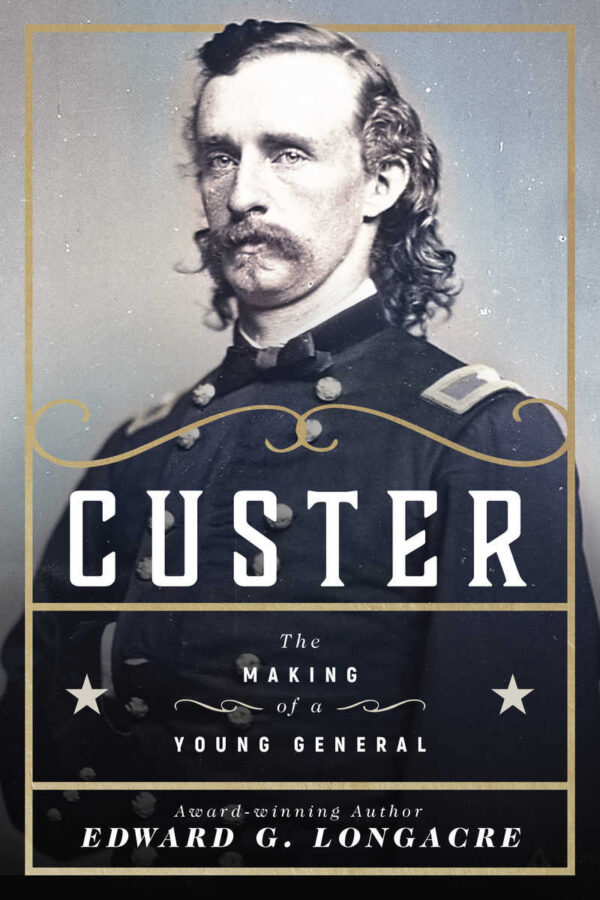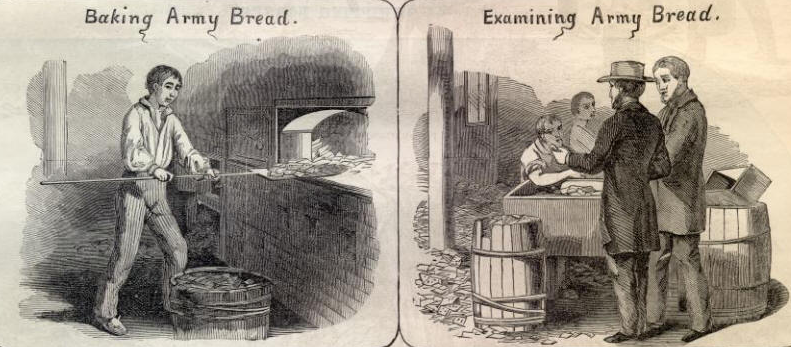Custer: The Making of a Young General by Edward G. Longacre. Skyhorse, 2018. Cloth, ISBN: 978-1510733190. $24.99.
 Although not as popular as U.S. Grant, William T. Sherman or Philip Sheridan, George Armstrong Custer emerged from the American Civil War as one of the most recognized and celebrated men in the United States. Known for his aggressiveness in battle and all-around reckless behavior, Custer’s was the story of the common man. The son of an Ohio blacksmith and justice of the peace, Custer graduated last in the West Point Class of June 1861. Assigned to the 2nd U.S. Cavalry (soon to become the 5th U.S. Cavalry), Custer was present at First Manassas. He later had a brief stint on the staff of General Philip Kearny.
Although not as popular as U.S. Grant, William T. Sherman or Philip Sheridan, George Armstrong Custer emerged from the American Civil War as one of the most recognized and celebrated men in the United States. Known for his aggressiveness in battle and all-around reckless behavior, Custer’s was the story of the common man. The son of an Ohio blacksmith and justice of the peace, Custer graduated last in the West Point Class of June 1861. Assigned to the 2nd U.S. Cavalry (soon to become the 5th U.S. Cavalry), Custer was present at First Manassas. He later had a brief stint on the staff of General Philip Kearny.
The following spring, Custer accompanied his regiment to the Virginia Peninsula in George McClellan’s bid to capture the Confederate capital at Richmond. Plucked from his unit for staff duty, Custer performed a number of engineering tasks during the Siege of Yorktown. His efforts eventually paid off when his actions were noticed by the army commander himself who promptly added Custer to his own military family.
Custer remained at McClellan’s side through the Seven Days’ Battles and during the Antietam Campaign. McClellan’s removal in November, 1862, left Custer without an assignment and he departed to his adopted hometown of Monroe, Michigan. He did not return to the Army of the Potomac until May 1863, having missed the disasters at Fredericksburg and Chancellorsville. Once again, Custer was assigned to the staff of Alfred Pleasonton, who eventually took over command of the army’s mounted arm.
Impressed with his young officer, Pleasonton managed to have Custer promoted to Brigadier General in the early stages of the Gettysburg Campaign. He was given command of four regiments of Michigan cavalry. For the most part, Custer performed very well, which was surprising consider his lack of command experience. He fought at Hunterstown, Gettysburg, Monterey Pass, Hagerstown and Falling Waters. That September, he was wounded in a skirmish at Culpeper Court House.
Civil War historian Edward Longacre has breathed new life into Custer’s career in Custer: The Making of a Young General. No stranger to the subject, Longacre previously authored Custer and His Wolverines: The Michigan Cavalry Brigade, 1861-1865. Similar to Gregory Urwin’s classic study, Custer Victorious: The Civil War Battles of George Armstrong Custer, Longacre details Custer’s accomplishments in the War of the Rebellion. Longacre, however, takes a different approach with his work. Rather than chronicling the entire war, he focuses on “the years leading up to [Custer’s] attainment of star rank as well as his first three months in command, during which he developed the tactics and style of leadership that would propel him through the rest of the war.”
Longacre is currently at work on a second volume that will cover the remaining months of 1863 through Custer’s service in the early days of Reconstruction.
Longacre’s goals with this work are two-fold. First, he sets out “identify and correct the myths, misconceptions, and misinterpretations that have distorted readers’ impressions of the soldier and the man.” The second is to “add depth to the Custer narrative by providing a substantial amount of detail on aspects of his life and career that have received relatively brief attention.” Longacre skillfully accomplishes both, from discussing the questions surrounding Custer’s actual birthplace to discussing an often-overlooked raid on Virginia’s Northern Neck that Custer participated in following the Chancellorsville Campaign.
Utilizing a vast number of primary documents at repositories from West Point to the Little Bighorn Battlefield National Monument, Longacre has weaved together a fast paced, easy to read, and enjoyable narrative. Readers will feel that they are riding alongside Custer on the battlefields of Virginia, Maryland and Pennsylvania.
Longacre also delves into Custer’s relationships with many of the key figures in this period of his life, including George B. McClellan and Alfred Pleasonton. He adds context and texture to Custer’s character by examining his personal life, including the character traits for which he is famous. The text is supplemented by the very helpful maps of cartographer Paul Dangel. The work is copiously annotated, giving the readers an opportunity to consult the sources themselves for additional research.
In sum, Longacre has provided excellent contribution to the literature on George Custer. This work is a fine addition to any Civil War bookshelf. The second volume will be strongly and anxiously anticipated.
Daniel Davis is the author of The Most Desperate Acts of Gallantry: George A. Custer in the Civil War.
